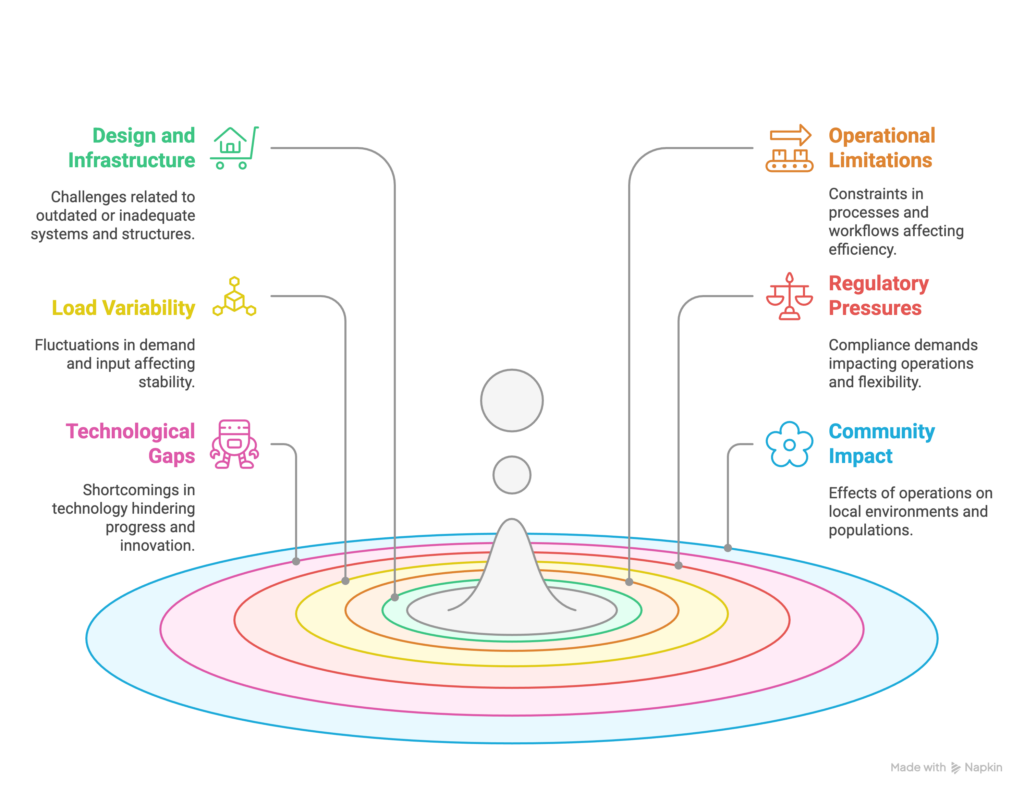Bio-Organic Catalyst (BOC) technology revolutionizes wastewater treatment by leveraging biocatalytic processes to address systemic inefficiencies in odor control, dissolved oxygen management, nutrient removal, and sludge reduction. This sustainable, non-toxic solution enhances treatment efficacy while reducing operational costs and environmental impact, making it ideal for municipalities and industries seeking compliant, future-ready systems Wastewater treatment is critical for protecting public health and ecosystems, but conventional methods struggle with aging infrastructure, rising energy demands, and stringent regulatory standards. Traditional aerobic systems rely on energy-intensive aeration and chemical additives, which often fail to address biofilm accumulation, hydrogen sulfide (H₂S) emissions, and nutrient overloading. These limitations escalate operational costs, increase sludge disposal volumes, and risk non-compliance with discharge permits. BOC’s bio-organic catalysts introduce a paradigm shift by accelerating natural biodegradation processes through Nano catalytic oxygenation, solubilization, and microbial activation. By optimizing oxygen transfer rates and breaking down complex organic pollutants.
Root Cause:

Design and Infrastructure:
Aging or outdated infrastructure struggles to handle modern pollutant loads, leading to inefficiencies in treatment capacity and frequent equipment failures. Many facilities lack scalability to accommodate population growth or industrial expansion, resulting in hydraulic overloading and compromised effluent quality Compact, modular designs are often overlooked, increasing land footprint demands in urbanized areas.
Operational and Process Limitations:
- Energy Intensity: Aeration systems consume 50-60% of a plant’s energy, driving high operational costs and carbon footprints.
- Sludge Management: Excess sludge production (from mechanical, biological, and chemical treatments) escalates disposal costs and environmental risks.
- Process Control: Manual operations and inconsistent monitoring lead to human errors, inefficient nutrient removal, and non-compliance with discharge standards
Load and Influent Variability:
Fluctuating pollutant loads—from industrial discharges or stormwater inflows—overwhelm biological systems, causing process instability. Emerging contaminants (e.g., microplastics, pharmaceuticals) often bypass conventional treatment stages, requiring costly tertiary upgrades
Regulatory and Compliance Pressures:
Stringent discharge limits for nutrients (nitrogen/phosphorus) and micropollutants force plants to adopt advanced technologies like membrane bioreactors or advanced oxidation, increasing capital expenditure. Real-time monitoring demands add complexity to data management and reporting
Workforce and Technological Gaps:
An aging workforce and skill shortages hinder the adoption of automated systems like SCADA or AI-driven process optimization. Resistance to adopting energy-efficient technologies (e.g., MBBR, anaerobic digestion) delays sustainability goals
Environmental and Community Impact:
Odors from H₂S and VOCs trigger public complaints and regulatory penalties, while large footprints limit expansion in land-scarce regions. Sludge disposal risks groundwater contamination if not properly stabilized
Solutions:
Bio Catalyst Middle East delivers eco-safe, GCC-compliant wastewater solutions for odor control, sludge reduction, FOG elimination, and sustainable water management. Discover our patented bio-organic catalyst technology.

- Odor Elimination: Nano catalytic oxidation neutralizes H₂S, ammonia, and VOCs instantly, eliminating odors at their source without masking agents.
- Sludge & Polymer Reduction: Bio-organic catalysts solubilize organic solids, reducing sludge volumes by 30% and polymer use by 50%.
- FOG/Biofilm Elimination: Breaks down fats, oils, grease (FOG), and biofilms into digestible substrates, preventing clogs and maintenance costs.
- Dissolved Oxygen (DO) Optimization: Micro-nanobubbles enhance oxygen transfer, reducing aeration energy costs by up to 40%.
- Denitrification & Ammoniacal Nitrogen Control: Accelerates autotrophic denitrification, meeting GCC nutrient discharge limits without carbon additives.
- Water Clarification & Mineralization: Increases water clarity by breaking down organic wastes and eliminating mineralization and biofilm buildup.
Key Advantages:
- Eco-Safe: Non-toxic, biodegradable, and Bio-Organic Seal of Safety for environmental compliance.
- Cost-Effective: Reduces energy, chemical, and sludge disposal costs by 30-50%.
- Proven Results: Case studies show 80-90% H₂S reduction and improved process efficiency in UAE facilities.
- GCC Expertise: Tailored solutions for high-temperature environments and water scarcity.
- ISO-Certified: Compliant with ISO 9001 (quality) and 14001 (environmental) standards.
- Holistic Approach: Combines odor control, sludge reduction, and water treatment for end-to-end solutions.
Request a Free Site Audit to optimize your wastewater treatment with sustainable, cost-effective solutions.